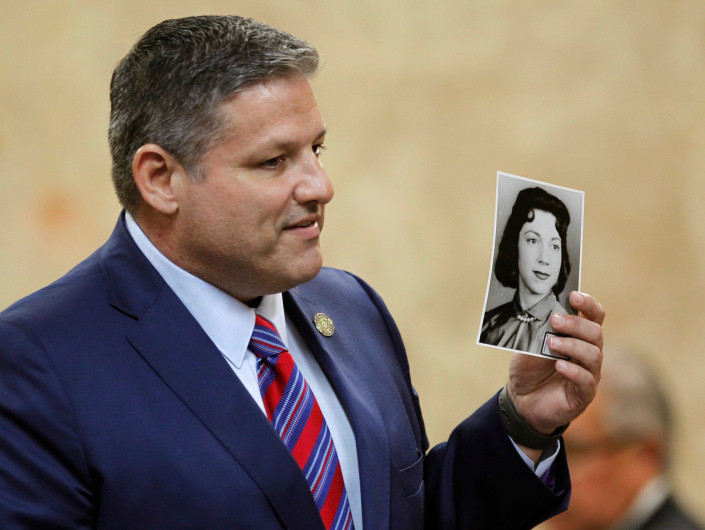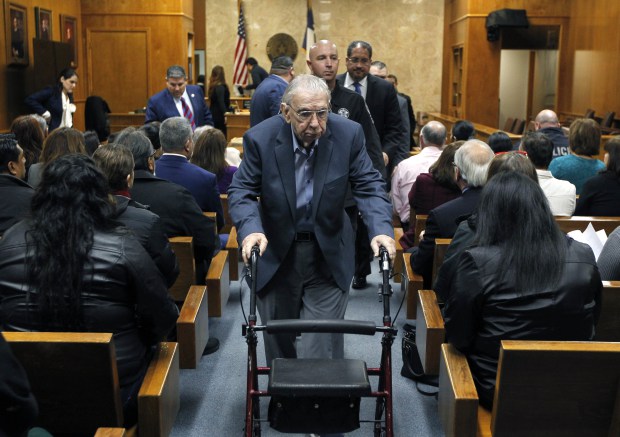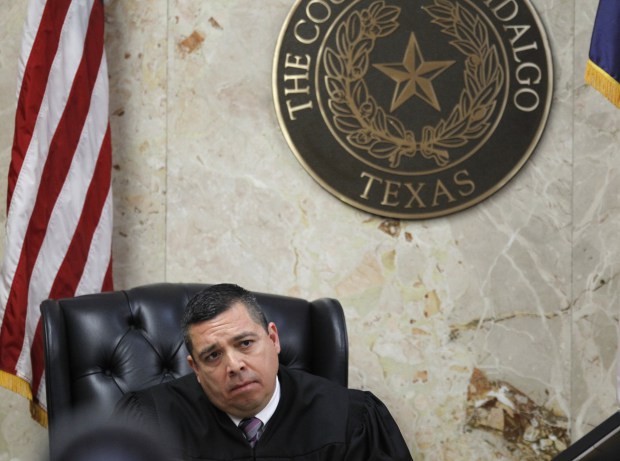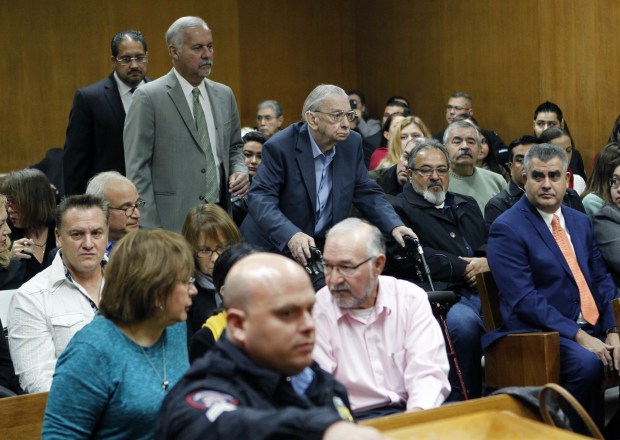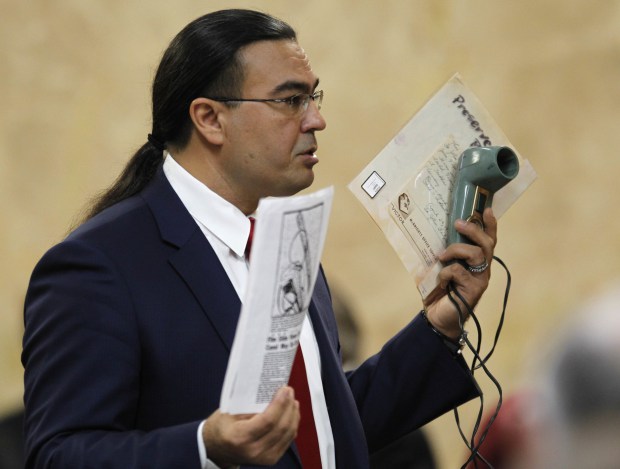In 1960, a Texas Woman Went to Confession and Vanished. Now an Ex-priest Has Been Convicted of Murder.
By Samantha Schmidt
For more than five decades, the black-and-white image of Irene Garza has haunted the town of McAllen, Texas, her story painfully recounted again and again. She was a 25-year-old dark-haired former beauty queen, her high school’s first Latina drum majorette, the first in her family to graduate from college. She was named Miss All South Texas Sweetheart, and worked as a teacher for disadvantaged children. But at the center of Garza’s life was her devout Catholic faith. In a letter to a friend in April 1960, she wrote about how she was no longer afraid of death. “You see, I’ve been going to communion and Mass daily and you can’t imagine the courage and faith and happiness it has given me,” she wrote in the letter, according to Texas Monthly. And so when Holy Week came, the most sacred time of year for Catholics, Garza decided to go to confession. On the eve of Easter, she drove to the Sacred Heart Catholic Church in McAllen. She never came home. Two days later, her beige, high-heeled shoe was found inches from the curb near the church. The following Thursday, her body was found floating in an irrigation canal. An autopsy would later determine she had been beaten, suffocated, and raped while unconscious. Authorities found few clues and struggled to piece together the moments before her death. But one fact soon became clear. Among the last people to see her was a 27-year-old priest with horn-rimmed glasses – The Rev. John Feit. The young priest admitted he had heard Irene’s confession that night, in the rectory instead of the confessional. But he denied killing the young woman. The priest avoided criminal charges, decade after decade. As the years passed, witnesses died, detectives changed, and the investigation into Garza’s murder stalled.
More than 57 years later, the murder’s lone suspect has now been found guilty. On Thursday evening, after a six day trial in the Hidalgo County Courthouse in Edinburg, a jury convicted Feit, now an 85-year-old ex-priest, of murdering Garza. The conviction brings long-awaited closure to one of the oldest cases in the Hidalgo County judicial system, according to the San Antonio Express-News. It is a case that captivated the town and the nation, and one that reaches back to a time long before many clergy abuse cases surfaced to the forefront of public awareness. But even after Feit’s conviction, questions persist about why it took so long to resolve the case, and whether the church and elected officials tried to cover it up. In Feit’s trial, prosecutors presented evidence that elected law enforcement officials and church officers suspected that Feit killed Garza, the Associated Press reported. But prosecutors allege the district attorney and church leaders cut a deal to stop the investigation, to protect the reputation of the church. Most elected officials at the time in Hidalgo County were Catholic, according to the AP, and then-Sen. John F. Kennedy, a Catholic from Massachusetts, was running for president that year. Thomas Doyle, 73, an inactive priest and expert on sexual abuse in the Catholic Church, read in court a letter recovered via subpoena of the Archdiocese of San Antonio and the Diocese of Corpus Christi, according to the McAllen newspaper the Monitor.
The letter, sent between clergy officials in October 1960, expressed concerns that if a priest was charged in Garza’s death, Kennedy’s presidential campaign and the re-election chances of the local Catholic sheriff would be at stake. The Rev. Joseph Pawlicki, a pastor at a church outside Austin, wrote to The Rev. Lawrence Seidel, the head of the Oblates of Mary Immaculate order to which Feit belonged, insisting he hire a private investigator to find “loopholes” in Feit’s case, the Monitor reported. The letter and trial testimony provide some clues as to why, for decades, Feit’s case went cold. In the beginning, shortly after Garza’s death, telling evidence all pointed to Feit. A photo-slide viewer with a handwritten note saying it belonged to Feit was found in the same canal where Garza was found dead. A priest, The Rev. Joseph O’Brien, an assistant pastor at Feit’s church, said that when a group gathered to drink coffee after midnight mass, he noticed that Feit had scratches on his hands. Detectives also found out that Feit had been accused of attacking another young woman in a church in a nearby town just weeks before Garza’s death. While she was kneeling at the communion rail, CBS reported, a man matching Feit’s description grabbed her from behind and tried to put a rag over her mouth. When asked to pick her assailant out of a police lineup, the young woman chose Feit. When he took a polygraph test and denied that he had harmed either Garza or the other woman, the examiner concluded that he was lying. He eventually pleaded no contest and was fined $500. Despite all this, officials decided the evidence was not strong enough for prosecution. No charges were filed against him for Garza’s murder. Locals wondered whether the church had conspired with the DA’s office or if the elected officials were too afraid to challenge the church.
Then, in April of 2002, the San Antonio police department received a phone call from a former priest in Oklahoma City – Dale Tacheny. He explained that in 1963, he had lived at a Trappist monastery in Missouri and counseled a priest from San Antonio. “He told me that he had attacked a young woman in a parish on Easter weekend and murdered her,” the caller said, according to Texas Monthly. In a letter, Tacheny identified Feit and recounted how he took the woman to the parish house to hear her confession. After hearing her confession he assaulted, bound and gagged her. Tacheny said he kept these confessions to himself out of a religious obligation. But decades later, he changed his mind. The Texas Rangers’ cold-case unit reopened the case, and also interviewed another key witness, O’Brien. But then-Hidalgo County District Attorney Rene Guerra refused to take the evidence to a grand jury, saying it was insufficient, lacking DNA or a confession, the Texas Monthly reported. He was eventually pressured into it but never called the two priests as witnesses. The grand jury declined to indict Feit in 2004 and Father O’Brien died in 2005. Garza’s family began to lose hope that justice would ever come. Then, in February of last year, Feit – no longer a priest – was arrested in connection with Garza’s killing. He was apprehended in Phoenix, where he lived with his family. Feit had left the priesthood in 1972, after spending some time at a treatment center for troubled priests in New Mexico, and at monasteries in multiple states. At one point he served as a supervisor charged with clearing priests for assignments to churches. One of the men Feit helped clear for a parish was James Porter, a child molester convicted of assaulting more than 100 victims, the AP reported. Hidalgo County District Attorney Ricardo Rodriguez’s office presented the case against Feit to the grand jury, which handed down the indictment. Rodriguez campaigned for election in part on a pledge to reopen the Garza murder case, after his predecessor had been unsuccessful at solving it. Still, the trial ahead was daunting. “Can Rodriguez win a conviction in a case that is now 56 years old, and whose star witness – Dale Tacheny – is in his eighties?” Pamela Colloff, the Texas Monthly reporter who has reported on the case for years, wrote after the arrest. “It remains to be seen whether justice will finally be served for Irene, or whether Feit . . . can outrun the clock.” At trial this week, Tacheny described how Feit had confessed to him that he had murdered a young woman. It wasn’t until years later that he learned that the woman was Garza.
“So I asked Father Feit, why are you here and not in prison?” Tacheny recounted, according to video of the testimony from KRGV. “He said there were three things. Number one, the church helped me, primarily through a priest. Law enforcement helped him. Finally, the seal of confession helped him.” A childhood friend of Garza’s, Ana Maria Hollingsworth, also testified about a time during Holy Week in 1960 when Garza spoke to her about a new priest at the church, Feit. “She said ‘it’s not the same going to confession anymore because I don’t get to stay in the confessional. He comes to pull me out and says oh this place isn’t good enough for you, let’s go to the rectory, where you’ll be more comfortable.’ And then they would walk off and go to the rectory,” Hollingsworth said. The defense lawyers said in closing arguments that there was no actual evidence Feit had the intent to kill or was involved in Garza’s disappearance. But the lead prosecutor, Assistant District Attorney Michael Garza (no relation to the victim), described Feit during closing arguments as “a wolf in priest’s clothing waiting to attack” who came down to the Rio Grande Valley “to find his prey,” according to the Monitor. As Feit heard the verdict, his face showed no emotion, videos showed. The now 85-year-old man left the courtroom supporting himself with a walker. He asked that the jury decide his sentencing, which is scheduled for Friday morning. He could be sentenced to up to 99 years or life imprisonment, according to the AP. Naomi Sigler, a relative of Garza’s, shed tears as she spoke to reporters after the verdict. “I just feel like justice has been served,” she said. “I’m sorry, I’m so tired. It’s been such a long, long, long journey.”
|
.
Any original material on these pages is copyright © BishopAccountability.org 2004. Reproduce freely with attribution.
